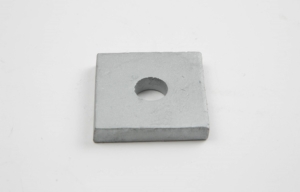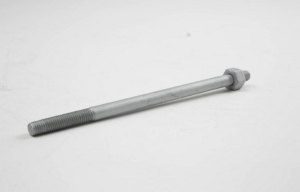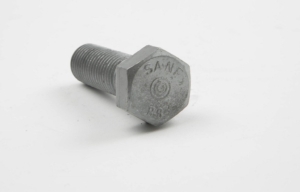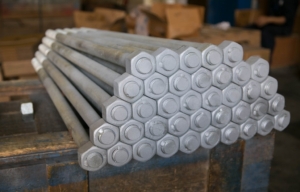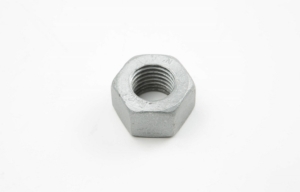Hot-dip galvanizing (HDG), as referenced on this site, is the process whereby fabricated steel, structural steel, castings, or small parts, including fasteners, are immersed in a kettle or vat of molten zinc, resulting in a metallurgically bonded alloy coating that protects the steel from corrosion
Hot dip galvanizing is also a process in which the fasteners are provided with a coating of Zinc by dipping the steel surface coated with Zinc ammonium Chloride flux, in a molten bath of Zinc at 450-540 °C
The fasteners need to be centrifuged to expel excess zinc adhering to the surface and threads to allow the dimensions to be maintained as required and hence this process will involve higher operating temperature of around 540 °C. At this temperature the viscosity of molten zinc is less thus removing excess by centrifuge operation is possible to maintain dimensional requirements.
The hot dip galvanized coating is thicker than electrogalvanized zinc and will have about 50-60 micron on centrifuged coating.
The zinc layer above the surface of steel will consist of various proportions of iron in it thus Gamma, Delta, Zeta and Eta layers of zinc will be formed in which the top layer Eta will be pure zinc. The alloy of zinc and iron within the coating ensure metallurgical bond with the base steel and thus ensures good adherence. The color of products after high temperature galvanizing will invariably look grey since before the products are cooled, the entire zinc forms an alloy with iron.
The pure zinc (Eta layer will be bright) will form when the low temperature galvanizing (450 °C) is done on larger structural sections.
As mentioned earlier the electro galvanizing and hot dip galvanizing both will protect steel by sacrificial corrosion by becoming anode when the base metal is exposed.
We are doing Hot Dip Galvanizing with the following Standards:
- DIN 267 PART – 10
- ISO 1461
- ASTM F2329
- ASTM A153 CL-C
- EN ISO 10684 ( Up to 8.8 grade )


